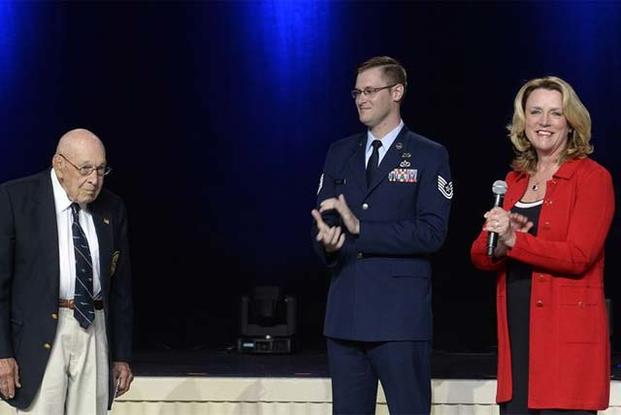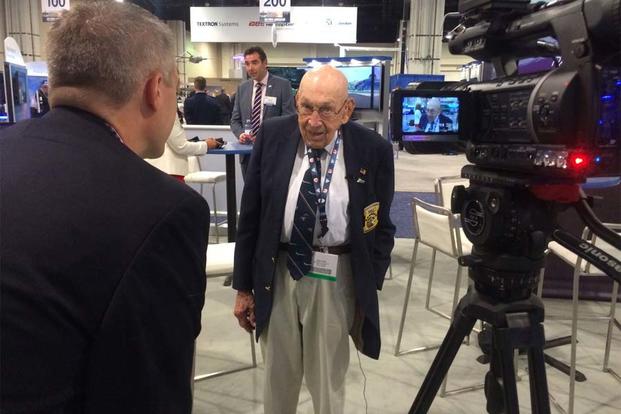The last surviving member of the "Doolittle Raiders" who led morale-boosting airstrikes in and around Tokyo during World War II took center stage at this year's Air Force Association conference outside Washington, D.C.
Richard E. Cole, the 101-year-old retired lieutenant colonel, was invited by Air Force Secretary Deborah Lee James to announce the name of the service's new Long Range Strike-Bomber, or LRS-B, to be known as the B-21 Raider in homage of the historic mission.
Afterward, Cole appeared on the floor of the show, held at the Gaylord National Resort & Convention Center in National Harbor, Maryland, just south of Washington, D.C., to talk to and pose for pictures with attendees. He also agreed to participate in an on-camera interview with Military.com.
Related Video:
VIDEO AFA 2016: Doolittle Raider
Cole served as co-pilot to Lt. Col. James Doolittle, who led 16 B-25 bombers and 80 crew members from an aircraft carrier in the western Pacific Ocean on a strike to target factory areas and military installations in and around Tokyo on April 18, 1942 -- a successful mission that helped boost morale after the attacks on Pearl Harbor.
Check out Military.com's coverage of the AFA's Air, Space & Cyber conference.
"I thought it was quite a nice tribute," Cole said after his appearance on stage. "I would feel a lot better about it if all the guys were here but it's not possible."
When asked to describe what he was thinking when he flew from the aircraft carrier USS Hornet on the first American mission to strike the Japanese home islands, he said, "Well, having not flown that long before … we didn't know any better. Unfortunately, it was a little bit hairy … but we came out unscathed."
Cole added, "We were fairly confident but you can't escape the fact that you have to entertain other ideas that might take place. You just grin and bear it."
Fifteen of the 16 bombers reached China as intended but either crash-landed or required crew to bail out. The other aircraft landed in the then-Soviet Union.
When asked what the most memorable part of the mission was, he said, "I think the most important thing I remember is when the parachute opened."
Cole laughed and said he was "very much" relieved it did.
"All of us were very happy that we lived up to our training and we did what we were supposed to do," he said. "The flight was designed to do two things: one, to let the Japanese people know that they could be struck by air; and the other thing was the morale, and we did that so we were very proud of that."
-- Brendan McGarry can be reached at brendan.mcgarry@military.com. Follow him on Twitter at @Brendan_McGarry.




























